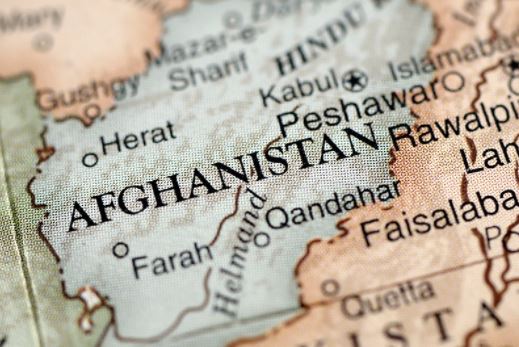
Case provides fair warning about the limits of U.S. security screening for Afghans

By Todd Bensman as published September 15, 2021 by Creative Destruction Media
With tens of thousands of Afghan evacuees in the pipeline for U.S. resettlement, the largely unreported federal prosecution of New Jersey resident Mujeeb Rahman Saify begs visitation as a reminder that national security screening has sharp limitations.
The 34-year-old Saify, a former interpreter for U.S. forces, in 2009 secured a “special immigrant visa” of the sort the Biden administration is planning to pass out to tens of thousands of incoming Afghan evacuees. After passing Department of Defense security vetting for his military interpreter job and then again when he became a Lawful Permanent Resident, Saify settled in New York and then New Jersey. He was pursuing the American dream for years already by the time the FBI arrested him in August 2019 on human smuggling charges.
The still-pending indictment shows the limits to which national security vetting for visas can truly plumb hearts and minds of Afghans sired in a pre-modern nation steeped in fundamentalist Islam. It accuses Saify of conspiring with a Pakistan-based smuggling network to transport at least two other Afghans through Mexico and over the U.S. southern border in 2016 and 2017, exposing yet another open flank for Afghans of uncertain character and danger to easily enter America when other avenues close.
An Afghan US national ‘security threat” is smuggled over the Texas border
As if Saify’s alleged violation of a compact with his adopted host nation was not bad enough on its own, one of the Afghans he allegedly helped smuggle over the Texas-Mexico border had been fired from U.S. Army employment as a “security threat,” had been banned from setting foot on another U.S. base and was barred for life from ever receiving a special immigrant visa.
That Afgan’s name is Wasiqu Ullah. (The Saify case court records only identify Ullah as “Alien 2,” however other court records soundly identify Alien 2 as Ullah) Neither could care about what America did or didn’t want. They took matters into their own hands.
With Saify working on illegal arrangements from New Jersey, Ullah paid $16,000 for his border end-run. He came across the Rio Grande at Brownsville, Texas on January 19, 2018.
Ullah applied for asylum, a more forgiving legal way in than obtaining a special immigrant visa. He would have made it had American border security officers not found his Department of Defense records and got them to an immigration judge who denied his asylum claim on “security grounds,” court records from the Saify case say.
According to court records from Ullah’s appeal of his asylum denial, Ullah had worked as a linguist for the U.S. Army at Camp Leatherneck from January 2011 to January 2014, even though one of his brothers was terminated as a linguist for involvement with Taliban sympathizers.
Ullah ran into trouble when he applied for a special immigrant visa to come live in the United States, a benefit of service to the American operation in Afghanistan.
But during the security screening, he failed a routine polygraph in answering whether he was a member of an anti-coalition group or had ever participated in an attack against coalition forces. An army counterintelligence memorandum judged that Ullah was suspected of affiliating with a foreign intelligence security service “such as the Taliban”, which meant Ullah had some communications that could pose a “force protection threat,” the appellate court record stated.
To get his Afghans across the U.S. southern border was not a problem that money couldn’t overcome. Saify and his Pakistani co-conspirators used fraudulent Moroccan, Bolivian, and Peruvian passports and visas indicating fake names under real photographs. They carried fake “letters of invitation,” electronic visas, and papers indicating finite hotel reservations that matched bogus return-flight itineraries. All of this was necessary for the transcontinental flights over oceans required for smuggling on the South America route. Or on this route for Afghan border crossers The Washington Post documented in 2016.
Saify didn’t merely arrange these dealings from afar; he used his immigrant status to fly to Afghanistan and then flew legs of the journey with his clients.
By legal or illegal means, pathways open to Afghans who pose security risk
The willingness of Saify to smuggle such a person into America, and Ullah’s willingness to brazenly cross the Rio Grande knowing America did not want him, underscores the probability that many more just like them are in the pipeline right now and won’t get caught as easily.
A reasonable expectation is that other dangerous Afghans who have themselves smuggled to the southern border, perhaps denied legal visas in Afghan refugee camps forming in Uzbekistan, Tajikistan, Pakistan, and Iran, won’t have discoverable records residing with the U.S. military, like Ullah’s.
The Saify case serves as a reminder of national security vetting problems at both the southern border with asylum and with the legal visa vetting processes that will be used for up to 130,000 Afghans now in the care and custody of the United States military. Saify used the former; Ullah the latter.
Neither case has attracted any media attention even though the cases so starkly demonstrate that policy choices regarding legal immigration benefits will drive Afghans to lie their way through whatever vulnerabilities they can find.
There are many more such vulnerabilities today than before the Biden administration took office, on both pathways.
Former President Donald Trump understood the risks of blank slates in databases. He substantially scaled back the special visa programs for Afghans and also Iraqis, when multiple cases of fraud and terrorism cases emerged for the special immigrant visas. For the land border, he also instituted asylum-deterring policies requiring asylum seekers to apply in countries they were transiting first.
But the Biden administration has taken steps that substantially increase the risk of terrorism and related crime.
The administration substantially expanded the special immigrant visa programs and then promptly ended Trump asylum-deterrence policies at the border.
At the land border, the result was an epic mass illegal immigration crisis not seen in more than 20 years that has swamped all normal border management systems of the sort that netted Ullah when times were considerably less chaotic.
These moves only heighten the chance of a terrorist or security threat infiltration when more Afghans start to cross along the same route that Ullah took, or that bad apples among the throngs of evacuees who will get a legal pass into the country on a visa. Todd Bensman is the author of America’s Covert Border War, the Untold Story of the Nation’s Battle to Prevent Jihadist infiltration